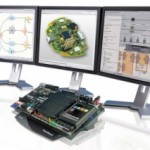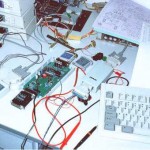In many organisations, both private and public – electronic and computer devices installed in the previous century may still be in use due to the fixed needs of the user. With simple maintenance such as dust removal and consumable replacement this type of hardware may have a lifespan of over twenty or more years. From some engineers’ perspectives this is a good thing, as it validates the quality of the original design and manufacturing.
However there will eventually come a time when such devices will require a major service, overhaul, replacement or the organisation may require more units – which simply cannot be delivered. This is a problem that becomes prevalent within organisations that are resistant to change, have a low capital expenditure budget or lack the knowledge and expertise to understand technological advancement in their field. So they continue to use the aged equipment for as long as possible. But in doing so, they could end up spending more or experience negative outcomes. How can this be possible? In many ways, such as:
Consumables supply issues – over time it will become increasingly difficult to replace consumables Such things as magnetic tape cartridges for data backup, ink ribbons and print heads for dot-matrix invoice printers, or even 3.5″ floppy disks can be scarce and expensive to replace. When a purchasing officer needs to spend three days to find a printer ribbon, or scour auction sites for disks – there’s a problem.

Spare parts – Like any device the availability for spare parts will be reduced over time to the point where the manufacturer cannot maintain inventory for economic reasons or simply goes out of business. Users then need to cannibalise existing hardware or conduct searches from surplus suppliers, second-hand dealers or even competitors to locate the required parts. This is both time-consuming, expensive and somewhat embarrassing.
Sourcing obsolete electronic components – Some devices may still be serviceable whilst the required components are available. However some organisations stretch their luck by maintaining systems – especially in IT and bespoke solutions – that rely on out of date components, optoelectronics and semiconductors. Trying to replace faded Hewlett-Packard LED display modules from the 1970s or damaged UART controller ICs from the 1990s can become a treasure hunt. Some buyers will find success with global searches for surplus component suppliers, or be willing to pay the high prices from licensed re-manufacturers – however at what price are they willing to pay?
Commissioning identical replacements– Some organisations may be so stubborn to in fact order the design and manufacture of the original item, with the least amount of changes possible in order not to update the entire device’s ecosystem. This type of behaviour may especially be prevalent in the public service or military, where compatibility with other devices is key. Finally – new old stock components may not meet current environmental or RoHS standards, thus rendering the replacement equipment useless in some jurisdictions.
The rise of counterfeiting – And of course when there is a demand for an item, there will be a counterfeiter ready to provide supply. Operators of critical systems that rely on obsolete semiconductors are easy targets for these shady suppliers – with the possibility of catastrophic results. Those “new” replacement parts could be pulled from old hardware and refurbished to look new, be physically identical and remarked but a different part, or correct in theoretical specification but unreliable in the field.
Retaining qualified employees – Finally, if you manage to jump the hurdles to source the required consumables, parts and requirements… who will maintain the equipment for you? Engineers retire, taking their years of knowledge about the systems with them, never to return. Consulting engineers may have to spend your time and money reverse-engineering or researching the obsolete devices just to understand where to begin.

Organisational reputation – Employees and customers can recognise easily when something is out of date – from IT networks to ticketing systems to ATMs to hotel room telephones, and much more. People enjoy using modern equipment and the advantages they bring. Any organisation doesn’t want to be known as a stalwart – which will cost them sales, customers, reduce employee morale and productivity.
In order to avoid all the negative points listed earlier, it is important for organisations to regularly research and future-proof their physical electronic assets. This doesn’t mean saying “yes” to every salesperson who walks through the door, but they do need to be aware of the recommended equipment lifespan and the required path to take before problems occur.
At the LX Group we have experience designing a wide range of customised electronic devices for various consumer, industrial, and Government-related markets. We can help interface your existing hardware to contemporary systems; and have the expertise to analyse your current requirements, assist with the production of your own designs – or work together to create devices to solve your current and future expansion needs.
If something is almost out of date, you’re almost out of time – so for more information and a confidential discussion about your obsolescence problems and how they can be solved– click here to contact us, or telephone 1800 810 124.
LX is an award-winning electronics design company based in Sydney, Australia. LX services include full turnkey design, electronics, hardware, software and firmware design. LX specialises in embedded systems and wireless technologies design. www.lx–group.com.au
Published by LX Pty Ltd for itself and the LX Group of companies, including LX Design House, LX Solutions and LX Consulting, LX Innovations.












